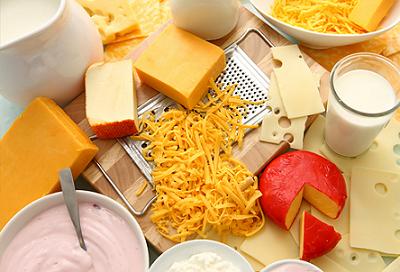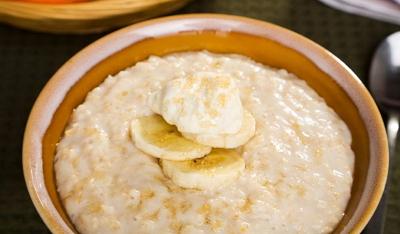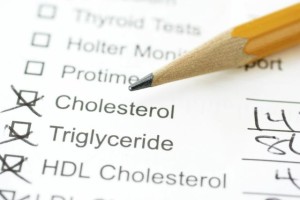 Poor cholesterol – it’s doomed to be misunderstood. The fact is, cholesterol is necessary to make cell membranes and even hormones. Your body produces cholesterol. Your diet also contributes but it’s not so much the cholesterol you eat as the saturated fat in your diet that raises your levels. Even more confusing, some cholesterol is “bad” (LDL attacks arteries and contributes to plaque buildup), while some is “good” (HDL escorts the bad stuff out of the body). Only about half of people who have heart attacks have high cholesterol, but it’s still important to keep your levels healthy. For every 1-point drop in LDL, heart attack risk falls by 2 percent; every 1-point rise in HDL reduces your risk of a fatal heart attack by 3 percent. For most people, a high-fat diet plus a sedentary lifestyle combine to raise levels of “bad” LDL and decrease “good” HDL. Cholesterol levels also rise with age. Your genes play a role, too: A few people inherit a genetic mutation that raises total cholesterol sky-high (over 600 mg/dl).
Poor cholesterol – it’s doomed to be misunderstood. The fact is, cholesterol is necessary to make cell membranes and even hormones. Your body produces cholesterol. Your diet also contributes but it’s not so much the cholesterol you eat as the saturated fat in your diet that raises your levels. Even more confusing, some cholesterol is “bad” (LDL attacks arteries and contributes to plaque buildup), while some is “good” (HDL escorts the bad stuff out of the body). Only about half of people who have heart attacks have high cholesterol, but it’s still important to keep your levels healthy. For every 1-point drop in LDL, heart attack risk falls by 2 percent; every 1-point rise in HDL reduces your risk of a fatal heart attack by 3 percent. For most people, a high-fat diet plus a sedentary lifestyle combine to raise levels of “bad” LDL and decrease “good” HDL. Cholesterol levels also rise with age. Your genes play a role, too: A few people inherit a genetic mutation that raises total cholesterol sky-high (over 600 mg/dl).
Symptoms – Usually none, if you have inherited familial hypercholesterolemia, you may develop small, bumpy cholesterol deposits on your elbows, knees, and buttocks. It you have them, have your cholesterol checked right away; diet and exercise can help, but it’s likely you’ll need medications to bring levels down to normal.
Eat Less Saturated Fat
Yrs, is the stuff in burgers, steaks, butter, cheese, and ice cream. If you want to avoid a heart attack, you’ll want to switch to skinless chicken breast, fish, olive or canola oil, and low-fat frozen yogurt. Experts estimate that for every 2 percent decrease in calories from saturated fat – about what you’d get if you had baby carrots instead of an ounce of regular potato chips or drank two cups of 1 percent milk – you would lower your LDL by 1 point. Keeping your daily intake of saturated fat to less than 7 percent of your daily calories – that’s about one tablespoon of butter or one slice of cheddar cheese plus ½ cup of ice cream if you eat 1,800 calories a day – can lower your LDL by 9 to 11 percent.
Get The Word Hydrogenated Off Your Menu
Read the back of the chips or a box of cookies, crackers, or baked goods, and you’re all too likely to see “partially hydrogenated” oil on the list. These oils, also known as trans fats, extend the shelf life of a product, but they can shorten your shelf life by raising LDL and triglycerides, reducing HDL, and increasing your odds of having a heart attack. In one study of 50 men with healthy cholesterol levels, eating trans fats for five weeks raised LDL 5 percent and lowered HDL a heart-damaging 11 percent.
Food served in restaurants and fast-food chains – especially fried food – can also be high in trans fats; many eateries have promised to change the oil in their deep fryers, but not all have followed through. Even if they have, fried food is still generally too high in fat and calories to eat safely expects on rare occasions.
Stop Smoking
Smoking depresses levels of good cholesterol by 7 to 20 percent and at the same time can raise your bad cholesterol 70 percent, according to one analysis of several studies. It also unleashes toxic chemicals make LDL more dangerous to arteries. Quit, and you’ll see benefit fast: Levels of heart-protecting HDL bounce back within a month or two.
 Eat Oatmeal, Barley, And/Or Beans Every Day
Eat Oatmeal, Barley, And/Or Beans Every Day
These three foods are packed with a type of soluble fiber called beta-glucan. It acts like a sponge, trapping cholesterol-rich bile acids in your intestines so they can be eliminated before they can raise your cholesterol. Whole grains such as whole wheat bread and brown rice, which are rich in insoluble fiber, just can’t do that trick. In one study of 36 overweight guys, those who ate two large servings of foods rich soluble fiber a day lowered their LDL by 17 percent.
Here are three great ways to get more into your diet.
– Enjoy grated apples over oatmeal at breakfast; in one review of 10 studies, people who started the day with a big bowl of oats had LDL levels 7 point lower than those who didn’t have oats.
– Cook up quick-cooking barley in just 10 minutes and serve it instead of rice. In a study from the USDA’s Beltsville Human Nutrition Research Center, 25 people with slightly high cholesterol who ate barely daily for several weeks slashed their LDL by up to 17 percent.
– Enjoy beans as a main dish in chili or soul, as a side dish at lunch or dinner, or sprinkled on salads. In a University of Colorado study of 17 people, those who ate ½ cup of canned pinto beans a day cut their bad cholesterol by 8 percent.
 Low-density lipoprotein (commonly called LDL) is measured in milligrams per deciliter, and the ideal level for human beings is under 100 mdl. Based on the findings of the American Heart Association, tracking LDL cholesterol is the single best way to gauge your risk of heart attacks and strokes — much more telling than total cholesterol levels. If you have high LDL cholesterol and you want to bring it down quickly, there are several changes you can make. Avoiding risk factors like smoking is important, as is getting plenty of exercise. Adding a few very helpful foods to your diet can also make a big difference.
Low-density lipoprotein (commonly called LDL) is measured in milligrams per deciliter, and the ideal level for human beings is under 100 mdl. Based on the findings of the American Heart Association, tracking LDL cholesterol is the single best way to gauge your risk of heart attacks and strokes — much more telling than total cholesterol levels. If you have high LDL cholesterol and you want to bring it down quickly, there are several changes you can make. Avoiding risk factors like smoking is important, as is getting plenty of exercise. Adding a few very helpful foods to your diet can also make a big difference.